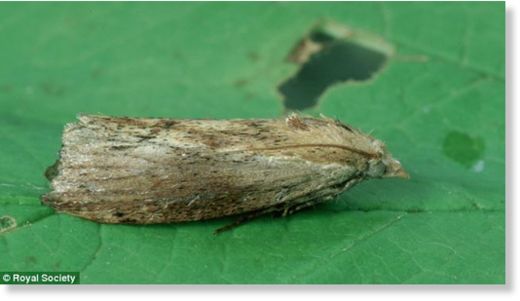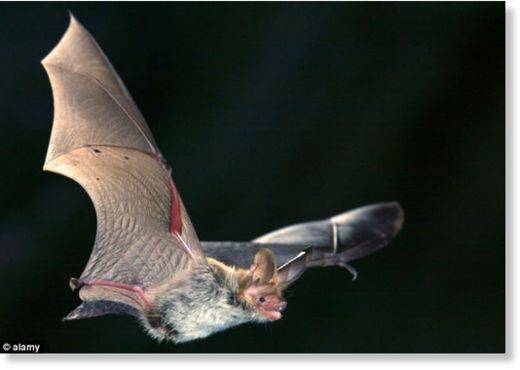The greater wax moth (Galleria mellonella) lays its eggs in beehives, where the larvae feed on the wax and debris of the honeycombs.
Now, new research published in the Royal Society journal Biology Letters has shown it has extremely high frequency sensitivity in its simply constructed ear.
It is capable of sensing sound frequencies up to 300 kHz, the highest recorded in any creature in the natural world.
Humans hear in the 2 to 5 kHz range.
The researchers said it is an example of a well-known animal with a newly discovered, extraordinary, sensory characteristic.
It also reflects on the 'co-evolution' of animals, as the moth's development is intertwined with that of their predators, bats.
The furry mammals find their way in complete darkness using a biological sonar system called echolation.
This involves emitting ultrasonic chirps and interpreting the echo the sound waves make after bouncing off objects and other creatures in their vicinity.
Echolation is so accurate with each chirp a bat can tell the location, size, direction and even the physical nature of an object.

The researchers used a state of the art scientific instrument called a laser Doppler vibrometer to test the hearing of twenty moths.
Dr Hannah Moir, of the University of Leeds, said: 'Many species of moth have evolved ultrasound-sensitive ears owing to the predation pressure of echolocating bats - this system is one of the best known examples of an evolutionary 'arms-race' between predator and prey.'
Hearing in greater wax moths is used for bat detection and also where males produce trains of ultrasonic pulses for courtship.
The ears of moths have only one to four receptor cells within the hearing organ.
The greater wax moth has four auditory receptor cells.
Dr Moir said auditory sensitivity up to 300 kHz is unprecedented, about twice as much as the previous highest recorded in an insect, the North American gypsy moth.
Furthermore, there is no known bat capable of producing such high frequency calls or indeed listening to them.
She believes it may have evolved to help the moth in both predator avoidance and possibly courtship.
Added Dr Moir: 'In any case, the greater wax moth's auditory capability mean that, in the context of the ongoing bat-moth evolutionary war, should the calls of bats adapt to even higher frequencies, the wax moth is pre-armed.
'Such extreme auditory frequency sensitivity is unmatched in the animal kingdom.'




Shouldn't that be 20Hz to 25 kHz? Which human can hear 5 kHz??